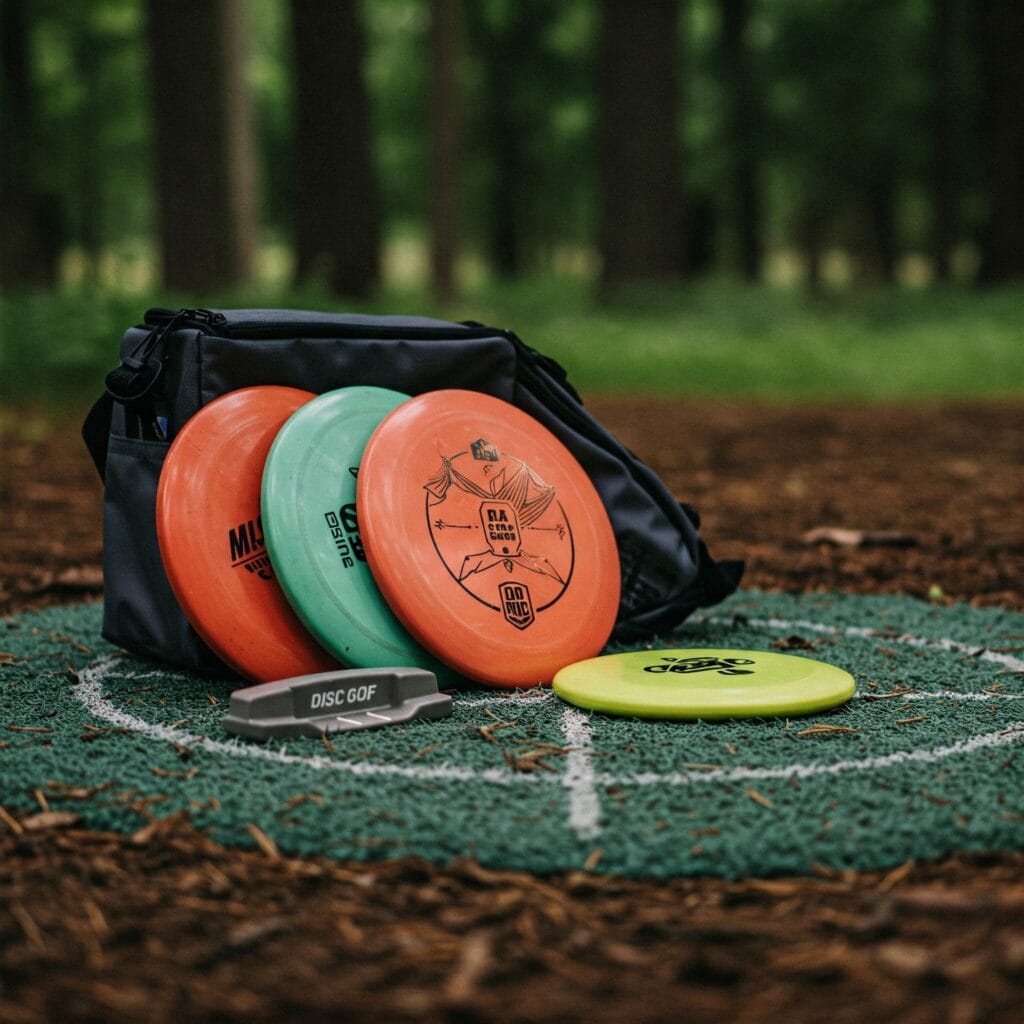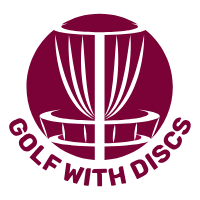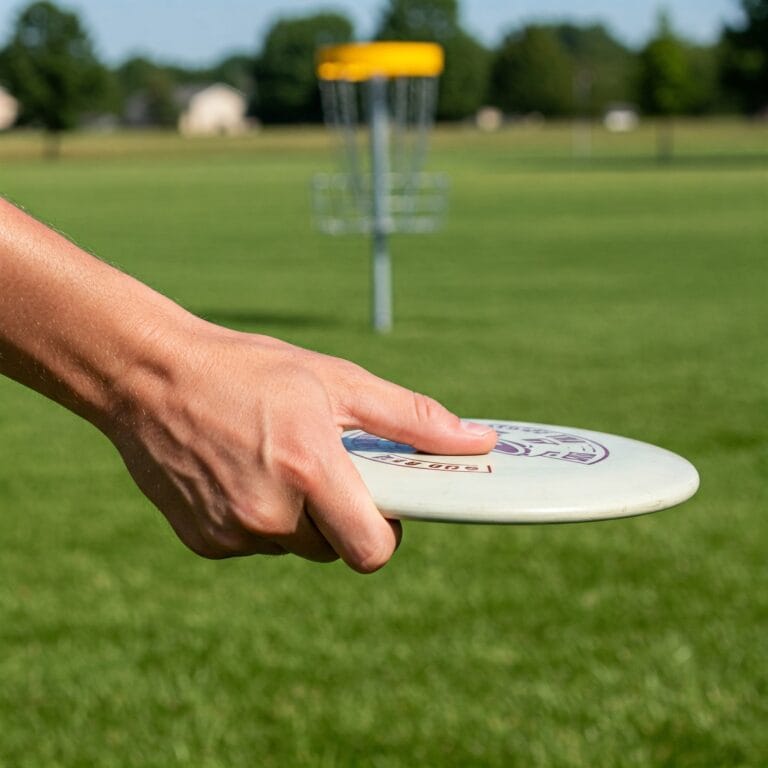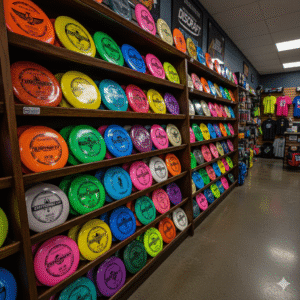You step onto the disc golf course, ready for the thrill of your first throw. But that excitement quickly fades when your disc hooks into the trees or drops like a rock. These disc golf beginner mistakes can turn excitement into frustration faster than you can say “double bogey.” It’s frustrating, right? You’ve got the energy and enthusiasm, but your discs seem to have other plans. Those early struggles can make the game feel harder than it should. The good news? A few smart choices—starting with the right disc selection—can make all the difference. By avoiding beginner missteps, you’ll turn those shaky throws into confident flights.
Disc Selection Advice to Avoid Beginner Pitfalls
Picking the right disc might sound easy, but it’s one of the most common disc golf beginner mistakes to overlook. Let’s break down where beginners go wrong with disc selection and how to avoid those missteps like a seasoned pro:
Focus on Fundamentals to Avoid Disc Golf Beginner Mistakes
Disc golf thrives on hype. New discs, flashy designs, and pro-player endorsements can dazzle beginners into buying discs better suited for a pro’s cannon arm. Don’t fall for it. Pro-player discs and sleek designs might tempt you, but they’re rarely beginner-friendly. As disc golf pro Paige Pierce puts it, “Stick to the basics.” Grab a simple putter and mid-range disc to build your skills. Chasing trends early will only throw you off-course. Basics always win.
How to Pick the Right Disc Weight
Disc weight plays a bigger role in your game than you might think. Light discs (150–160 grams) are like training wheels—they’re forgiving and handle wind better for new players. Heavier discs (170–180 grams) are stable but need more power to throw. Start light, build control, and move up in weight as your skills improve. Think of it like lifting weights: no one starts with the heaviest dumbbell in the gym.
Understanding Golf Disc Plastic Types
Disc plastic types might sound like small talk for disc golf nerds, but they matter. Base plastics like DX or Pro D are affordable, grippy, and perfect for beginners. Sure, they wear out faster, but that’s a good thing early on—it forces you to adapt. Premium plastics like Star and Z last longer and are great once you’ve developed consistency. Start cheap, learn fast, and upgrade when you’re ready.
Simplify Your Disc Golf Bag to Avoid Rookie Mistakes
A huge bag of discs might look impressive, but it’ll only slow you down as a beginner. Stick to the essentials: a putter, mid-range, and one driver. Build confidence with these core discs before expanding. It’s like learning to cook—start with a few key ingredients before buying out the spice aisle. Simplicity wins every time.

The Core of Disc Golf: Don’t Neglect Your Putt and Approach Game
While launching a disc for a booming distance drive is undeniably satisfying, disc golf is ultimately won and lost within the crucial range of putting and approach shots. Neglecting putting and approach discs will cripple your overall performance. Devote ample practice time to putters and mid-range discs, honing your consistency and accuracy. As disc golf legend Ken Climo famously declared, “The game of disc golf is putting, putting, putting.” You can’t expect to sink long putts consistently if you haven’t invested the time to develop a solid putting routine with the right putter.
Learn from Your First Discs and Avoid Disc Golf Beginner Mistakes
The first discs you choose aren’t just tools; they’re your mentors on the course. A putter and mid-range disc might not look as thrilling as a distance driver, but they’ll teach you control, accuracy, and finesse—essential skills that no flashy driver can fake. Imagine trying to learn piano by starting with Beethoven’s symphonies. It’s madness! Instead, you’d start with scales, chords, and simple melodies.
Your early discs work the same way, helping you build muscle memory and understand the mechanics of a smooth throw. Over time, as your confidence grows, you’ll find that upgrading to more advanced discs is a natural progression—not a shortcut. Trust the process, and your game will thank you.
Understanding Flight Ratings to Avoid Common Throwing Mistakes
Disc flight ratings offer valuable insights into a disc’s behavior, encompassing speed, glide, turn, and fade. Many new players disregard these ratings, leading to confusion about unpredictable disc flight patterns. Understanding disc flight ratings empowers you to select discs that match your skill level and desired flight paths.
For instance, a disc with a high “turn” rating will have a tendency to veer right (for a right-handed thrower) during its flight path, making it ideal for a smooth backhand drive with a desired “anhyzer” angle (tilted disc) for a finesse approach shot. Conversely, a disc with a high “fade” rating will exhibit a pronounced leftward turn at the end of its flight path. By deciphering these ratings like a code, you can make informed choices and build a disc arsenal that complements your throwing style and course strategy.
Congratulations! You’ve conquered the knowledge needed to avoid common disc selection mistakes that plague new disc golfers. Embrace the learning curve, and be patient with yourself as you delve deeper into the fascinating world of disc selection. Remember, disc golf is a journey of continuous improvement, and making mistakes, especially regarding disc selection, is simply part of the thrilling process. Share your experiences and insights in the comments below, and let’s cultivate a vibrant disc golf community that thrives on growth and friendly competition. Until next time, may your throws be precise, your disc selection be wise, and your birdies be plentiful!
Common Questions That Disc Golf Beginners Ask
No! In fact, starting with too many discs can be overwhelming. A putter and a mid-range disc are all you need to learn the fundamentals of throwing. Once you’re comfortable, you can gradually add more discs to your bag for specific situations.
Lighter discs (around 150-160 grams) are easier to control for beginners. They’re less affected by wind and allow you to focus on form. As your arm strength improves, you can experiment with heavier discs (170-180 grams) for more stability in windier conditions.
Beginners often choose flashy, advanced discs instead of starting with putters and mid-range options. Overloading their bags and ignoring disc weight are also frequent issues.
Choosing the right discs helps beginners improve technique, gain control, and build confidence without unnecessary frustration.
A basic putter and a mid-range disc are the best starting points for mastering form and accuracy.
Disc flight ratings explain a disc’s speed, glide, turn, and fade. Beginners should focus on discs with moderate ratings for better control and learning.






